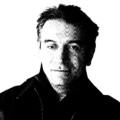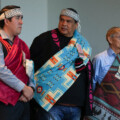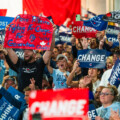In this week’s Hub book review, Patrick Luciani examines On the Edge: The Art of Risking Everything by Nate Silver (Penguin Press, 2024) and explains why the world belongs to those who take calculated risks—and why our society is in such short supply of those willing to do so.
All of life is a gamble. Our best option is to understand concepts such as chance, risk, and probabilities, and how to make decisions that bend the randomness of life to our advantage as much as possible.
One of the first to understand this was the 17th-century French mathematician, gambler, and Catholic philosopher Blaise Pascal (1623-1662) in his Pensées. His timeless insight, known as Pascal’s Wager, still resonates today: if we flip a coin on God’s existence, even if it’s a long shot, what is the better bet? Should we believe that God exists? Pascal says we should. We lose nothing if we believe in God, and it turns out He doesn’t exist. If God does exist, those who believe will earn eternal happiness. The best bet is to believe despite the odds.
That, in a nutshell, is Nate Silver’s message in his latest book, On the Edge.
In his first book, The Signal and the Noise, Silver taught us how to think about predictions under conditions of uncertainty, Bayes Theory, randomness, and how to separate good information from bad when making predictions. He warns us not to be influenced by conventional wisdom or even the wisdom of crowds. He encourages us to avoid confirmation bias while seriously thinking about probabilities.
In, On the Edge, Silver continues his lesson on probabilistic thinking by taking us deep into the world of gambling, game theory, and artificial intelligence. In over 500 pages of fascinating observations and conversations with poker players, game theorists, and venture capital investment leaders, he makes two key observations: one, about what the average person might learn about risk, and second, how it has divided America into two dominant political classes.
The first is understanding the power of expected value (EV) like Pascal did 400 years ago. The example Silver uses is the 2016 presidential election. He estimated that Clinton had a 71 percent chance of winning compared to 29 percent for Trump. If you bet $100 on Trump to win, 71 percent of the time, you lose it all, but a Trump victory would have returned $500. Should you take the bet? The EV here is $74 or 74 percent profit on each dollar invested.
When the EV is positive and high, with reasonable probabilities, you take the bet. That doesn’t make you a gambler but a savvy investor. Here, Silver gambled against conventional wisdom, which gave Trump only a 5- or 10-percent chance of winning. But his probabilities gave him an edge the market missed.
This concept is so crucial that it permeates the entire book, whether betting the odds on a Sunday afternoon NFL game, playing blackjack, investing in a startup, or buying a property. Keep in mind that we’re talking about the long run; a high EV entails risk in the short term. As a professional poker player and gambler, Silver made this point when he bet over $1.8 million on one NBA season, or about $10,000 a day, and came away with a measly net profit of only $5,242. The lesson is that most professional gamblers come away empty-handed. As John Maynard Keynes supposedly said, in the short run, markets can be irrational longer than you can be solvent. But there are times when the probabilities favour the bold, but humans haven’t evolved to assess probabilities quickly, if at all.
A second central point in On the Edge is the widening political gulf between risk-takers and risk avoiders; the first he calls the River—a world that includes Silicon Valley, cryptocurrencies, Wall Street, and Las Vegas—where gambling and risk-taking are better understood. The other world is the Village—centered around academic institutions, big established corporations, and governments—where risk-taking is held in lower esteem. Both are highly suspicious of each other.
Those in the River worry that academic, scientific, and journalistic expertise is too closely allied. In contrast, Villagers fear the political corruption of wealthy venture capitalists who benefit from existing social hierarchies.
For Silver, we’ve lost our appetite for risk despite a few high-profile entrepreneurs. At one extreme, we have too few Elon Musk types; at the other, we have “people who haven’t left their apartment since COVID.” On the Edge shows how a better understanding of risk and probabilities can point us in the right direction. This is the book to keep next to Thinking, Fast and Slow by Daniel Kahneman.










